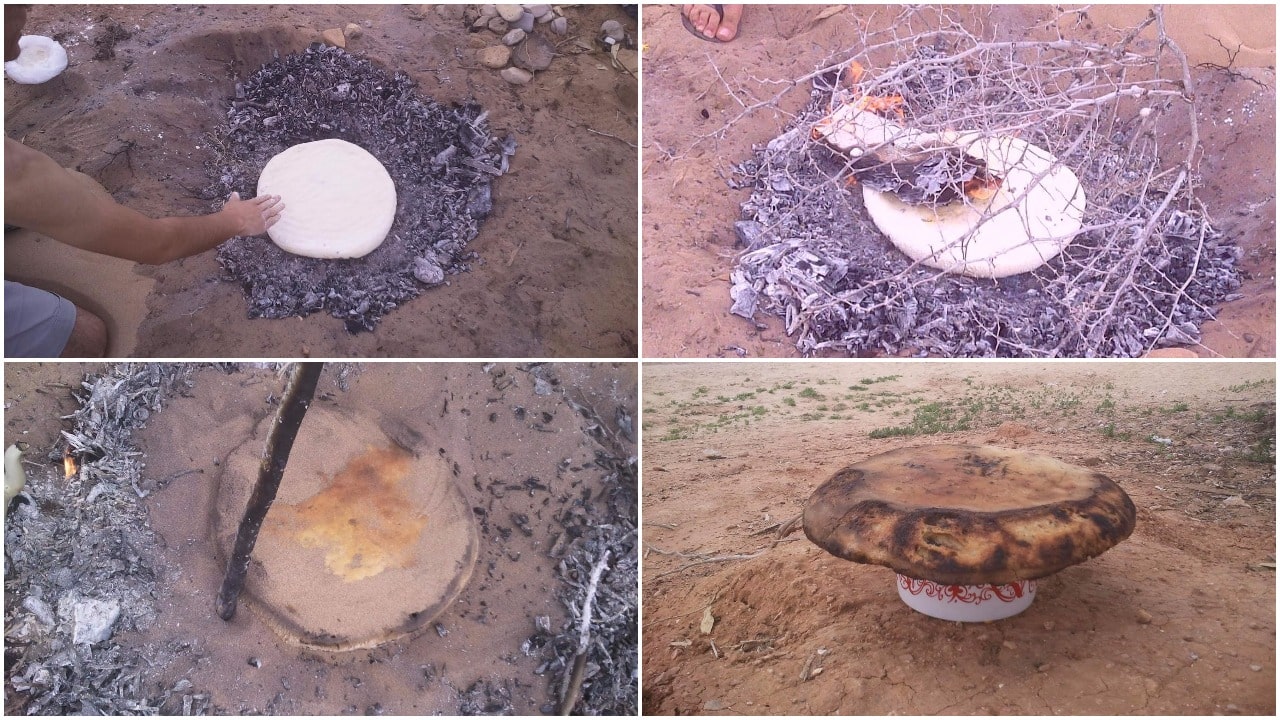Amazigh linguistics is very important here to make a clear-cut distinction between feminine and masculine nouns. If a noun is masculine, Abadir, for instance to feminize it, the consonant “T” is usually added at the beginning as a prefix (derivational morpheme) and at the end of the word, Tabadirt. To give illustrations, Ighram (singular) becomes Tighrmt (singular), and Amazir becomes Tamazirt (village/countryside), and Amazigh becomes Tamazight. Arba (Tamazight), Afrokh (tashlhiyt), and Ahn(d)jir (tarifiyt) that stands for a boy becomes Tarbat, Tafrokht, and Tahnjirt (a girl). When one hears or reads “AIT “in tandem with group of people, it simply signifies people of ATTA are as we say Ait Atta, Ait Mellol/ people of Mellol. In light of this clarification Amazigh language is patently in no way a sexist language.
Contextualization of Tabadirt
As students at the level of university, we were conversing on some way to rejuvenate our potency for study on the eve of beginning a coming semester. We have a common background of culture and language, Amazigh (particularly South East). We usually try to feel at ease as soon as possible. A seeminly common suggestion was to prepare Tabadirt. My roommates finally agreed to do so on condition that it should be prepared in Taghazot beach, Agadir.
As far as a reference of findings obtained here is concerned, my close cultural and linguistic familiarities with the local culture and interviewing persons of the area allowed me to write down this sort of sine qua non information pertaining to day-to-day life of people in question.
Introduction
Luciano Pavarotti states “One of the very nicest things about life is the way we must regularly stop whatever it is we are doing and devote our attention to eating.” From this quote, one’s mind is set on tenterhooks if one does not eat. That is, one always keeps seeking to set it at rest at all costs, instead. Whenever one yearns for the tranquility, one naturally commences to consider how to enjoy it to the fullest. In so doing people’s intuition takes them and tries to ponder on the techniques ancestors used to instigate their lives to get pleasure whether by what they used to eat or how to prepare it. Indeed, Tabadirt epitomizes much more than a meal per se outside of one’s home. In this essay, I will broach the recipe of its preparation, define it in its context and evince its significance as an ethnic food throughout history in direct connection with culture.
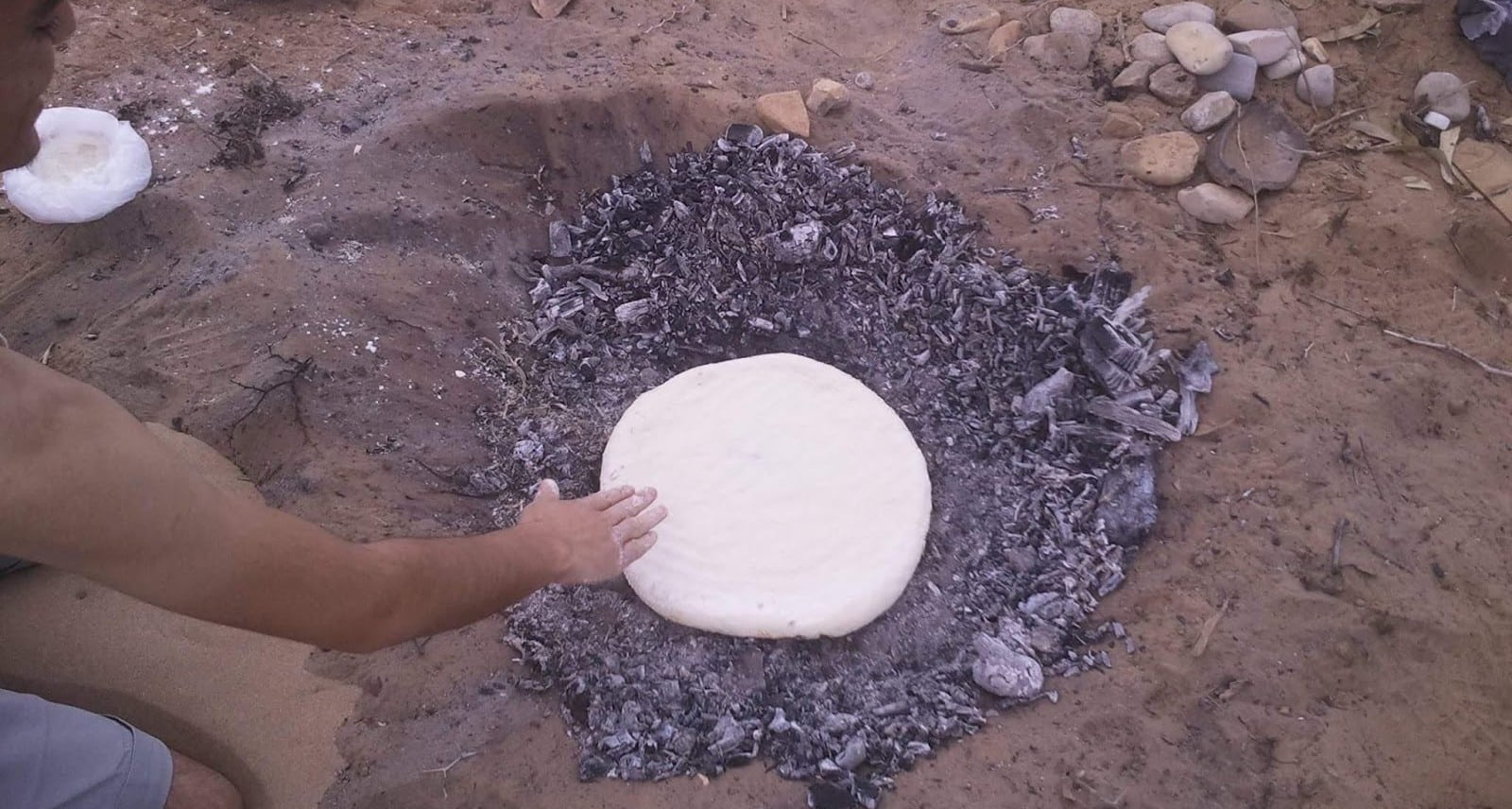
Tabadirt and its ingredients
Evidently, Tabadirt or “Amazigh pizza”, a name given by youth compared to pizza in the main, comes to the notice of Ait Atta the largest group among tribal communities having resided in Morocco for centuries. It is named after Dadda Atta as the father of this ethnic group. Besides, it is located in the South East of Morocco. Not only have Ait Atta created this sort of food, but also other neighboring ethnic groups as Ait Merghad, Ait Yeflman, and Ait Hdido, who pervade in the high Atlas. This food further demands that one be equipped with ample skills, either men or women, in cooking unlike those things at home.
The process of its preparation incorporates four steps mainly. The first one is to meticulously choose some round, harsh and small stones to use them on the ground as a carrier that prevents the dough (which is already supposed to be kneaded ahead) from touching the dust. The second step is to stuff the dough with those ingredients prepared at home. These ingredients are varied, say, eggs, meat, onions, tomatoes, carrot, spices whose smell and taste seem to be strong. The third one requires bringing a particular sort of sand to use after flatting the dough upon hot stones by means of woods burnt over. The fourth one is to cover the dough altogether with clean sand and burn enough woods over that added layer of sand, which is commonly found in the valley. Indeed, when it becomes heated enough it turns out to be brown; almost ten people can eat it and extinguish their hunger. Finally, even though Tabadirt is a demanding task, it is a food of full flavor.
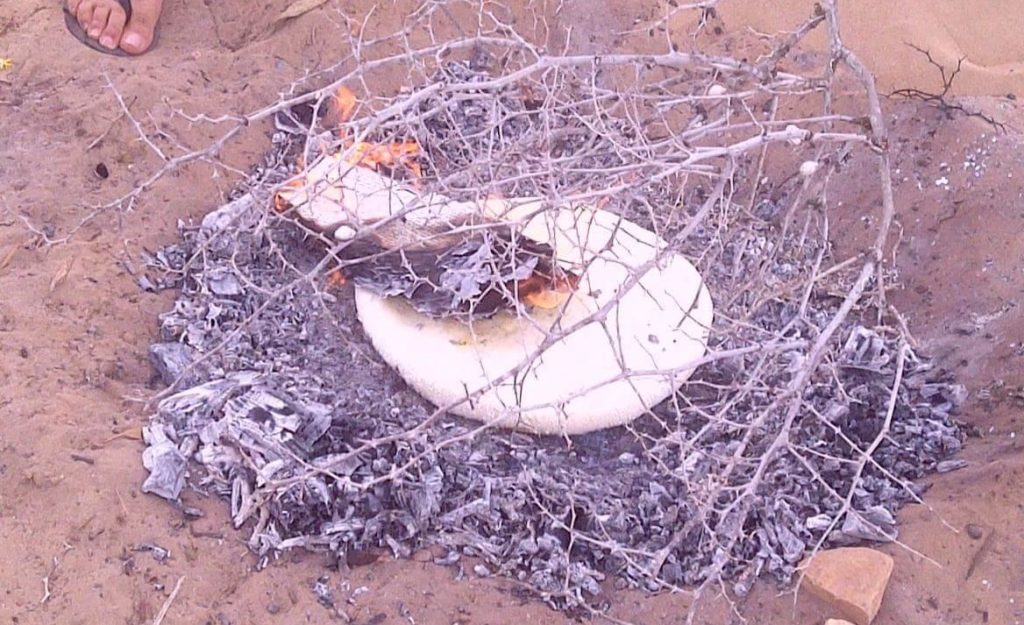
Tabadirt’s perception
Whenever one has mentioned Tabadirt, it usually occurs to his or her mind that something is associated with desert. By all means this type of food was ab initio found within a nomad daily life. These nomads invented this food to serve them energy and time, and space into the bargain. In essence, Tabadirt is a threefold concept. As far as energy is concerned, it is due to Tabadirt’s ingredients which are very effective in resisting hunger and it is concomitant with fueling energy to hone the extent of endurance. As regards the time it demands to prepare it is important in understanding its secret. To wit, during the day and especially at noon is the best time to have Tabadirt either alone or in concert with others. The reason behind this very duration, the nomads begin to prepare it to economize the food of the whole day, by dint of shortage of sustenance, and direct at other task-demanding and energy-depleting necessary affairs like water-bringing and animal-milking. In the eyes of the nomad, space is indisputably a consequential segment in day-to-day life. Add to this, water and grass available in a particular area are the paramount, if not sole, criteria a nomad rests upon to outlive or abandon quickly for a better life in the service of the family and the animal husbandry en masse. Furthermore, these factors gathered are sufficiently conducive to unriddling the Tabadirt’s symbol in a nomad culture. Its form, they shape a circle around it as they start eating it, is a circle which signifies life and a moving element, such as Ahidus dancers during playing. Indeed, Tabadirt is looked on the source of mutual strength and joy, and equality among members of the same family to gather and organize well the rest of the day.

Tabadirt in its social context
Any food in any culture has witnessed a story behind its emergence, namely, Tabadirt in the Amazigh nomad culture made history by its special story. Tabadirt as an Amazigh ethnic food is basically originated from nomad culture, albeit it has recently been domesticated on the morrow of urbanization and migration factors. This latter clearly contributes to variegating food prepared at home with which we were unfamiliar on account of its aroma of outdoors. Add to this, Tabadirt, in common with other food, has recently construed as a highly substantial meal to generously serve to the guest(s). This meal candidly speaks for itself when it is timely introduced in the atmosphere of celebrating a particular ceremony. For example, in some cases, the newly married bride, in order to reveal whether she is indisputably adept at cooking or not, i optionally tends to prepare Tabadirt to peak with the recognition of the whole family, let alone if she is beautiful and elegant. Then she becomes in favor with the new received family. At present, it is further served in concomitant with the tea pot. This tea is preferred to be simmered on the ashes of the burnt wood to heat Tabadirt. As a highly recommended food in special circumstances, it has recently cooked in demand for personal reasons. Eventually, Tabadirt is one of the contributions to the Amazigh culture in general, and a nomadic culture in particular that made history by it.
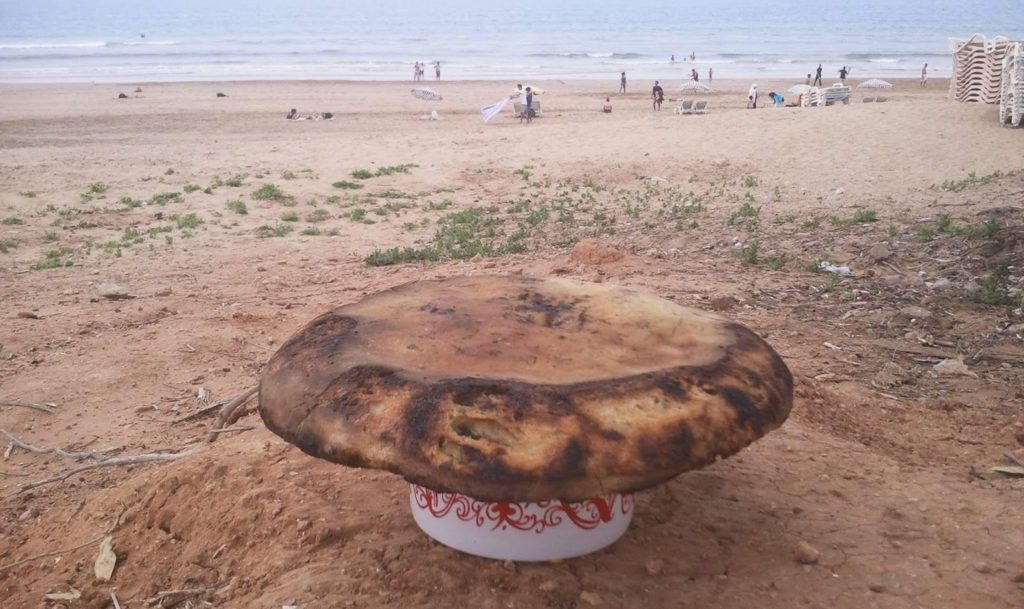
Conclusion
In conclusion, the most precious gift parents, very mother, can offer to their offspring, a girl in particular, with a view to taking immense pride in their roots and/ or family-belonging, is the culture, of which its food distinguishes it that human has lived on. And the first manifestation the host family in back of matrimony attests to the eligibility and credential of the bride is nothing but her cooking skills, believing that having a man’s heart is by all means through feeding enticingly his stomach.
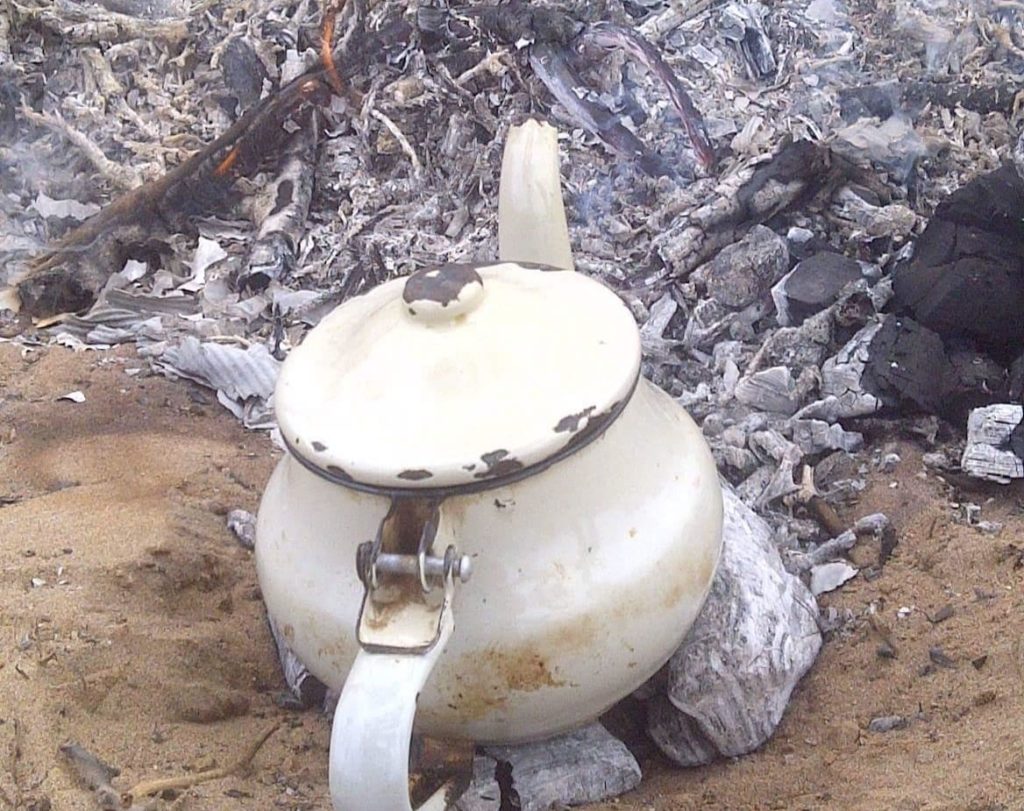
Acknowledgment: I am thankful for the guidance of Professor Fatima Moaid from the University of Dhar El Mahraz in Fes, Morocco.
Resources: See Sadiqi, Fatima. Moroccan Feminist discourse. Palgrave Macmilan, United States, 2014

